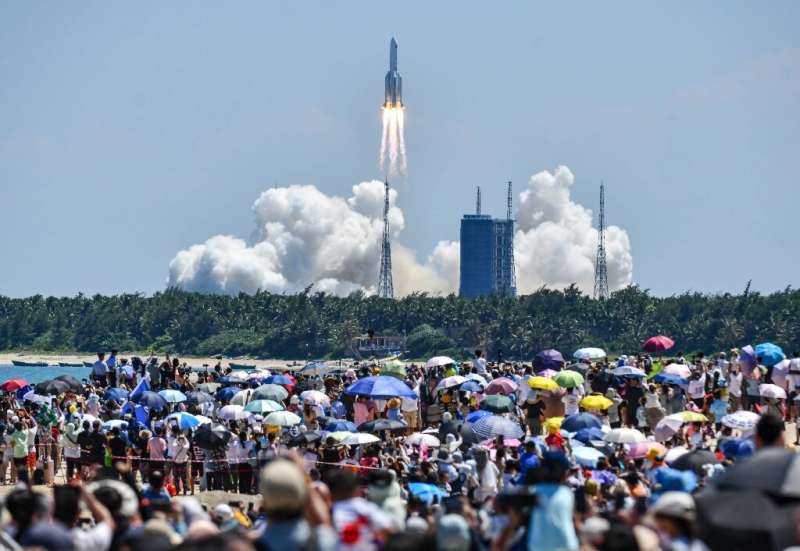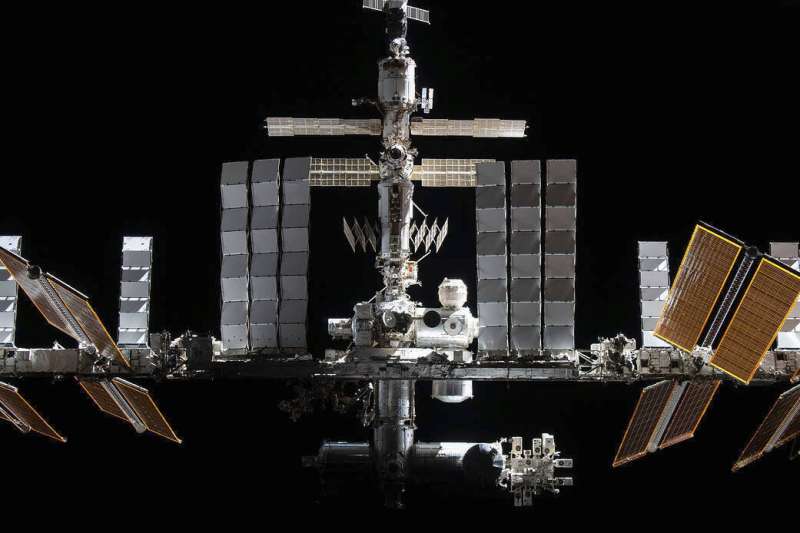
Copernical Team
China's new quantum satellite now operational
 A Chinese micro-nano quantum satellite has entered its planned orbit and is now operational, the University of Science and Technology of China (USTC), one of its developers, said on Thursday.
The low-orbit satellite was designed to conduct real-time quantum key distribution experiments between the satellite and ground station, and to carry out technical verification. It was launched atop a
A Chinese micro-nano quantum satellite has entered its planned orbit and is now operational, the University of Science and Technology of China (USTC), one of its developers, said on Thursday.
The low-orbit satellite was designed to conduct real-time quantum key distribution experiments between the satellite and ground station, and to carry out technical verification. It was launched atop a NewSpace may eliminate sun-synchronous orbits
 NewSpace is a recently formed movement and philosophy that encompasses a globally emerging private spaceflight industry. This term is generally used in connection with a global private sector of new aerospace companies and ventures.
One primary objective is to develop faster, better and cheaper access to space and spaceflight technologies. This movement is thought to be a major driving for
NewSpace is a recently formed movement and philosophy that encompasses a globally emerging private spaceflight industry. This term is generally used in connection with a global private sector of new aerospace companies and ventures.
One primary objective is to develop faster, better and cheaper access to space and spaceflight technologies. This movement is thought to be a major driving for Utah’s Great Salt Lake is disappearing

Utah’s Great Salt Lake dropped to its lowest recorded water level last month as a megadrought persists across the US southwest, forcing the fast-growing city to curb its water use. From space, satellite images show how water levels have fallen from 1985 to 2022 – exposing large expanses of lakebed.
No reported damage in Philippines from Chinese rocket debris

Next generation atomic clocks are a step closer to real world applications
 Quantum clocks are shrinking, thanks to new technologies developed at the University of Birmingham-led UK Quantum Technology Hub Sensors and Timing
Working in collaboration with and partly funded by the UK's Defence Science and Technology Laboratory (Dstl), a team of quantum physicists have devised new approaches that not only reduce the size of their clock, but also make it robust enough
Quantum clocks are shrinking, thanks to new technologies developed at the University of Birmingham-led UK Quantum Technology Hub Sensors and Timing
Working in collaboration with and partly funded by the UK's Defence Science and Technology Laboratory (Dstl), a team of quantum physicists have devised new approaches that not only reduce the size of their clock, but also make it robust enough Scientists have systematized all the halos discovered over thousands of years of observations
 For the first time in the history of observations, scientists from the Helsinki and Ural Federal Universities Jarmo Moilanen and Maria Gritsevich have systematized information about all forms of atmospheric halos recorded by mankind at the end of 2021. From numerous sources of data on observations, the history of which includes 4-5 millennia, 119 different forms of atmospheric halo are known tod
For the first time in the history of observations, scientists from the Helsinki and Ural Federal Universities Jarmo Moilanen and Maria Gritsevich have systematized information about all forms of atmospheric halos recorded by mankind at the end of 2021. From numerous sources of data on observations, the history of which includes 4-5 millennia, 119 different forms of atmospheric halo are known tod Sneaky discovery sheds light on star death, black holes and gravity waves
 There is always something new and exciting happening in the field of black hole research.
Albert Einstein first published his book explaining the theory of general relativity - which postulated black holes - in 1922. One hundred years later, astronomers captured actual images of the black hole at the center of the Milky Way. In a recent paper, a team of astronomers describes another exciti
There is always something new and exciting happening in the field of black hole research.
Albert Einstein first published his book explaining the theory of general relativity - which postulated black holes - in 1922. One hundred years later, astronomers captured actual images of the black hole at the center of the Milky Way. In a recent paper, a team of astronomers describes another exciti Chinese booster rocket makes uncontrolled return to Earth

A Chinese booster rocket made an uncontrolled return to Earth on Saturday, leading US officials to chide Beijing for not sharing information about the potentially hazardous object's descent.
US Space Command "can confirm the People's Republic of China (PRC) Long March 5B (CZ-5B) re-entered over the Indian Ocean at approx 10:45 am MDT on 7/30," the US military unit said on Twitter.
"We refer you to the #PRC for further details on the reentry's technical aspects such as potential debris dispersal+ impact location," it said.
In a statement posted to its official WeChat profile, the China Manned Space Agency later gave coordinates for an impact area in the Sulu Sea, about 35 miles (57 kilometers) off the east coast of the Philippines' Palawan Island.
"Most of its devices were ablated and destroyed during re-entry," the agency said of the booster rocket, which was used last Sunday to launch the second of three modules China needed to complete its new Tiangong space station.
Russian space chief: no date yet for space station pullout

The head of Russia's space agency said Friday that the country has not set a date for pulling out of the International Space Station and that the timing would depend on the orbiting outpost's condition.
Week in images: 25-29 July 2022

Week in images: 25-29 July 2022
Discover our week through the lens
